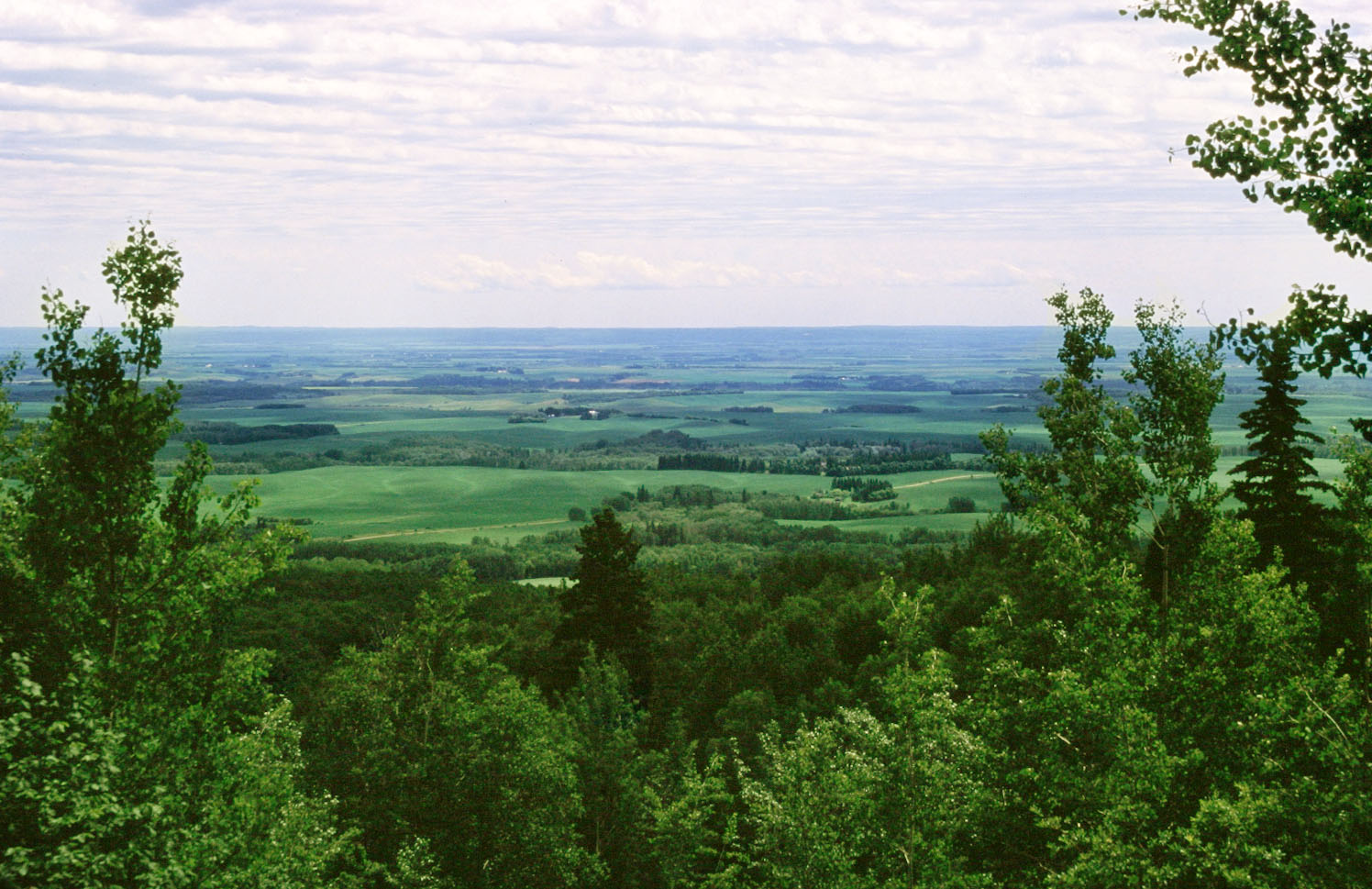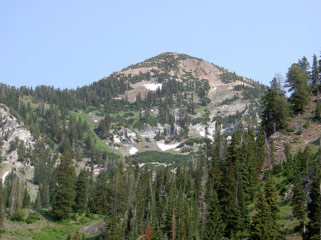
Swan River Valley in Manitoba
Álftárdalsbyggð – Swan River Valley
Álftárdalur (Swan River) Valley is located in the northwestern part of Manitoba, close to the provincial border with Saskatchewan. It is necessary to explain the meaning of the word valley on the plains of Canada because we are not talking about deep valleys like those found so widely in Iceland, but these are varying depressions in the plain alongside rivers which usually flow through the middle. On both sides rise hills, of varying heights and then the flat plain takes over. In such a landscape, the word mountain takes on a new meaning because the Icelanders who settled on these plains agreed with the English-speaking majority of the settlers and sometimes gave the hills mountain names. The Swan River Valley lies between the Duck Mountains to the south and the Porcupine Hills to the north, but at the end of the valley to the west rises Thunder Hill. It should be pointed out, however, that the highest point in Manitoba is in the Duck Mountains, where it reaches just over 800 meters. The Icelanders described it this way: “Álftárdalurinn lies between the so-called Duck Mountains to the south and Porcupine Hills to the north, but at its end to the west stands Thunder Hill like a gable.” Although these hills are low, they give the landscape a great look that is completely lacking as the land is lowest and flattest in Manitoba.

Highest point in Manitoba
Swan Valley is almost 100 km (62.5 miles) long and 50 km (31 miles) wide, and although there are small hills here and there, it can be said that this is a 50 km-wide plain. The Swan River or Álftá originates north in Porcupine Hills, first flows in a large bend west into Saskatchewan but then turns east and flows into Swan Lake or Álftavatn. This lake is small and the so-called Grunná or Shoal River flows from it into Lake Winnipegosis. When it melts in the spring, Álftá turns into a beautiful large river in an incredibly short time, but then it slows down and the river continues as before. Two smaller rivers or ravines flow through the valley as well as several streams. Centuries ago, this was a vast habitat for bison, and indigenous peoples lived in harmony with the creatures before the chaos began in the early 19th century and the herds of bison were destroyed.
Beginning of settlement
It was not until sometime in the last decade of the 19th century that people began to pay attention to the valley. The reason was very simple, no one knew about its existence until the construction of a railway so far north in the province was considered. The so-called North Line extended from Winnipeg to Dauphin, from there it extended northwest all the way to Prince Albert in Saskatchewan. As usual, people first chose the land next to the track and, when it was laid just south of the valley, settlers gradually moved there because people immediately saw how good the land options were there. These people came from all over Eastern Canada, from the south in the United States, and then a few Icelanders appeared.
By 1898, a number of Icelandic families had moved west across the ocean to Winnipeg, Manitoba, and continued west to Argyle. There was almost no free land to be had anymore and the price of land that was for sale was too high for poor immigrants. The settlers lived with friends and family and the group of newcomers grew. This situation encouraged Sigurður Kristófersson, a settler in the area, to start searching for land. Sigurður had for years considerable involvement in immigration issues in Manitoba and knew something about the areas that were being opened. He went on an expedition north to the Swan River Valley in the summer of 1897 and returned in the autumn with good news and described the country’s advantages. A meeting was held during the winter at Skafti Arason’s home where the meeting attendees encouraged Sigurður Kristófersson to return as soon as possible to the north to secure land for several families.
Icelandic settlement:
On June 15, 1898, the first settlers set off north with their dreams and all their belongings on wagons pulled by oxen. Gunnar Helgason, who was born in Geirólfsstaðir in Skriðdalur, and Jakob Ágúst Jónsson from Ljótsstaðir in Vopnafjörður were on the trip. They went the direct route, but it still took more than a month to get to the valley. Today this route is driven in less than 5 hours. When they approached the valley, everything was uninhabited, but the provincial government had the previous winter had a road cut from Dauphin over the Duck Mountains, but this path could hardly be called a road because those comrades had to bridge all streams and springs to get over the mountains. Those comrades settled to the west in the middle of the valley and were the only Icelanders to settle in the valley until after the summer. In the autumn, two other families joined and their numbers gradually increased.
Although the travels of settlers between the countryside and parts of the province were not frequent at the moment, there were reports of a new, Icelandic settlement in many places, e.g. in the Icelandic settlement by Músará or Mouse River in N. Dakota. Halldór Egilsson was living there and he, together with Sumarliði Kristjánsson, traveled north to Álftárdalur Swan River Valley and liked what they saw. They hurried back and told the news that attracted a lot of attention and many prepared to leave. The railway reached the village of Cowan, which was almost 50 km (31 miles) from the destination, but then the people from Mouse River went by carriage.
The settlers in the Swan River Valley worked tirelessly; all the settlers of the plains in Canada could tell the same story about the pioneer years. But unwavering courage, hard work, and hope for a better future lifted everyone through the hardships of those days, and before long, the wheels began to turn in their favor. The Icelandic settlers in the valley never became numerous, but they lived well there with people of different origins. All the settlers enjoyed that Canada did not discriminate against its citizens, all contributed to making a new human society, a new nation a stronger whole.
Social life:
The community in the Swan River Valley was formed by settlers of various nationalities, so it is most natural to say it is Canadian, but what characterized it from the beginning was its multinational culture. There were relatively few Icelanders compared to their numbers in other Icelandic settlements on the plain, but they still managed to maintain a congregation, a reading society and a women’s society. Reverend Pétur Hjálmsson founded the congregation that immediately belonged to the Icelandic Lutheran Church in North America. However, the congregation could not hire a full-time pastor, but it was considered sufficient to have an Icelandic pastor visit one month a year during the summer. Among the pastors were Rev. Steingrímur N Þorláksson, Rev. Guttormur Guttormsson, and Rev. Jóhann Bjarnasson. Although the inhabitants of the Swan River Valley had different origins, each ethnic group preserved its traditions and Icelanders were certainly not lagging behind others in that respect. They sent news from the settlement to the Icelandic newspapers, announced deaths and births, and announced meetings. Their diligence in the Swan River Valley was sometimes quoted when discussing the preservation of Icelandic heritage in the West.
English version by Thor group.
